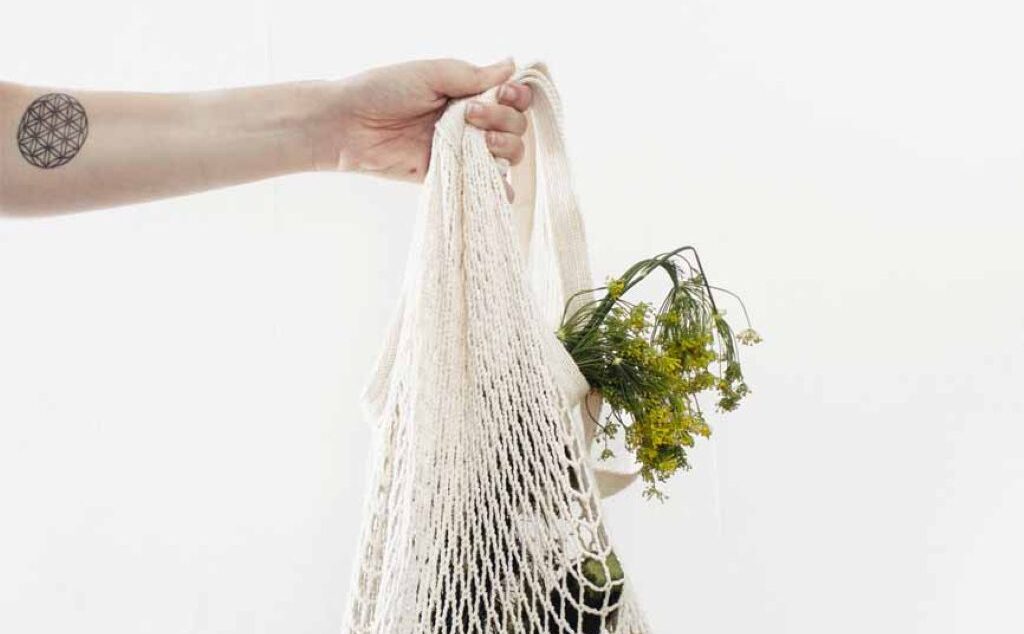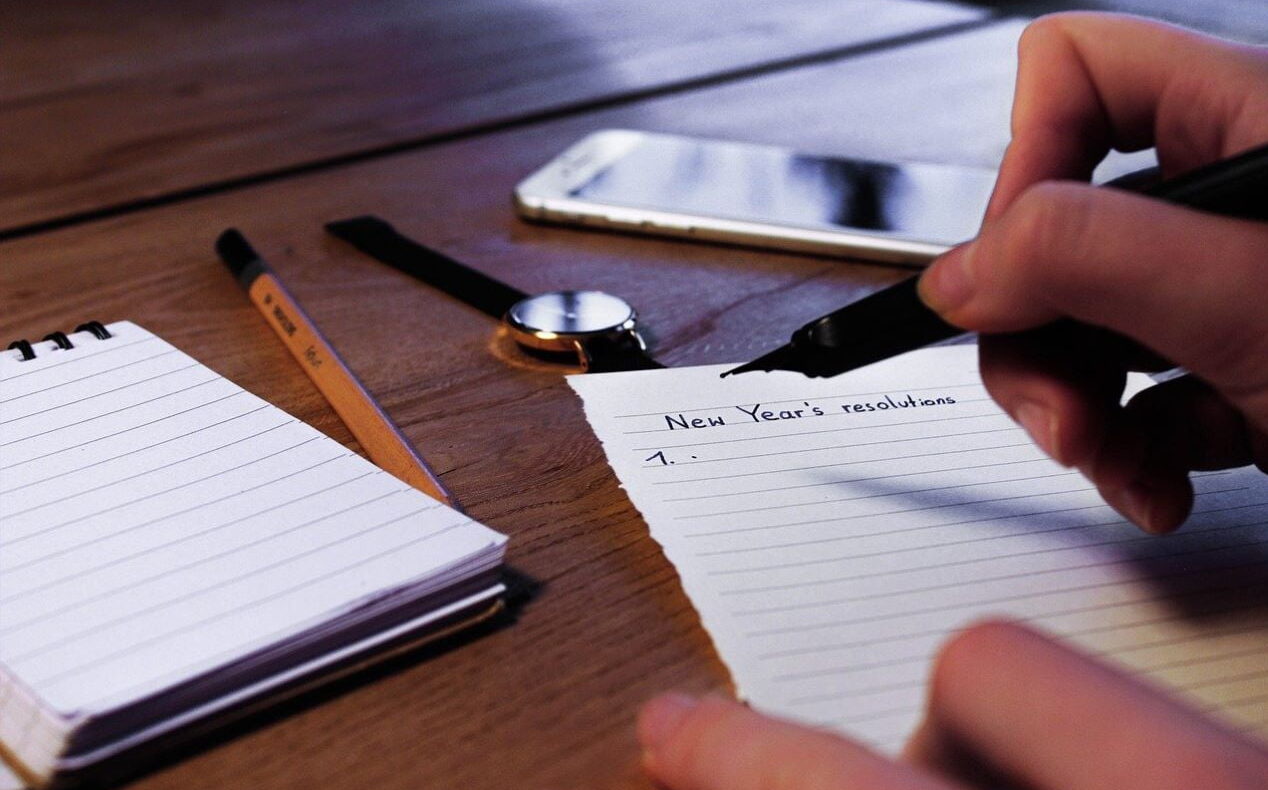Have you chosen your 2021 resolutions yet? Turns out, a lot of people are focusing on environmental sustainability and keeping our planet healthy. This resolution topic is a trend for a reason, because bettering the planet is more important than ever — and we can all do our part by starting now.
Check out these 21 eco-friendly resolution ideas for you to follow this year.
Resolution ideas 1 to 6: Cut out single-use plastics

We’ve all heard this one many times by now, but committing to three simple words — use less plastic — can make a huge difference for our planet. The best part is, it’s super easy once you establish new habits.
Here are 6 simple ways to reduce plastic use in 2021:
1. Start using only reusable face masks (if you can).
Unless your job requires single-use face masks, it’s time to start investing in a few reusable ones. Single-use face masks are causing an enormous amount of plastic waste, as the majority of them contain the plastic polypropylene that can’t be recycled with regular plastic. We should definitely avoid these if we can.
ACTION: You can buy reusable face masks almost anywhere. Head to your favourite local store and they’re likely selling them. It’s also a great way to support local.
MORE: Other ways to be eco-friendly during COVID-10 isolation
2. Choose reusable produce bags over single-use plastic ones.
A lot of us have established the habit of bringing reusable shopping bags with us when we leave the house, which is great. But let’s take it to the next level.
ACTION: Purchase reusable produce bags for your fruit and veggies (like these from Green Munch) and leave them in your reusable grocery bags so you always have them with you.
3. Invest in reusable food wraps and stop using plastic wrap and plastic sandwich baggies once and for all.
Once you do, you’ll never go back. Not only will you save money, but you’ll have less to store (goodbye, big Saran Wrap and sandwich bag boxes) and you’ll have so much less waste. Plus, you won’t be storing leftovers in plastic, so they’ll taste better when you heat them up.
ACTION: Replace the big bad boxes of plastic wrap and sandwich baggies with reusable food wraps. These beeswax food wraps have amazing reviews, ship to Canada, and are totally affordable.
4. Store your food in mason jars.
Leftovers, bulk foods, dry foods, baking ingredients, work lunches — you name it. Whatever it is, you can store it in a mason jar, wash it and reuse it.
This means no more plastic containers, bags or plastic wrap, and more beautiful displays (they look great in the kitchen), properly sealed foods (no leakage), and shopping in bulk (meaning less expensive grocery shopping and less waste).
ACTION: Buy mason jars and start filling them up. You can buy them almost anywhere — then start packing lunches and leftovers in them, meal prep with them, and put your ingredients in them for easy (and visually appealing) storage.
5. Decline cutlery when ordering takeout or taking food to go.
If you’re heading home anyway, it makes sense to use your own sturdy, reusable cutlery.
ACTION: When ordering takeout or leaving a restaurant with food to go, specifically request no plastic cutlery. When you do need to eat on-the-go, grab a fork, knife and spoon from home and bring it with you. If you end up with the plastic stuff by error, remember it’s also washable (use it again) and recyclable.
6. Stop using disposable coffee mugs and water bottles.
There’s no excuse. Every coffee cup and single-use plastic water bottle used pollutes the earth. Consider if seven billion people used both every day — that’s 14 billion coffee lids and water bottles getting recycled or thrown out per day — and that’s just too many.
ACTION: Add a reusable water bottle and coffee mug to your shopping list. Buy them once, refill them, and simply stop polluting this way. Have a set at home and a set at work. Cafés will always make your drink in your reusable mug, and often will give you a discount for bringing in your own cup (coffee shops may not want to do this during the pandemic, but COVID will not go on forever). Win, win!
Looking for more ideas? Here are other ways to live a plastic-free lifestyle.
Five 2021 resolution ideas to reduce mindless consumption

We’re generally a society that consumes too much — whether it’s food, fashion or just ordering mindlessly online. Being mindful about what and why you’re buying something is key, but it’s not always a measurable resolution.
Here are some actionable resolutions for decreasing mindless consumption in 2021:
1. Don’t buy it unless you need it.
Do you really need it? Why? For how long?
ACTION: Before purchasing something new, think about at least three different uses for it. Then, think about how long the item will last you and whether it’s worth both the cost to you and the planet.
2. Repair before throwing away.
Have you ever spotted a piece of furniture at the landfill that looked like it was in good condition? We tend to throw things away too easily if we don’t want them or they’re broken. Instead of trashing it, fix it (or donate it). It may not be easier, but you’ll consume less new material and the landfill will be that much emptier.
ACTION: Try repairing it before throwing it away. You’ll save money, learn new skills and consume less new material overall. If you can’t repair it, can you turn it into something else? You can have fun here and go DIY crazy.
3. Practice thrift shopping.
Whether for clothing, furniture or decor, thrift shopping is fun, saves money and helps decrease consumption of new materials. Another person’s trash can truly be your treasure, and the hunt for it is half the fun.
ACTION: Keep a list of items that you need. Before buying them new, spend a Saturday secondhand shopping for the items on your list (we have tons of tips for thrift shopping here). If you can’t find what you’re looking for after putting in an effort, buy it new.
4. Have a shopping fast (or a few).
Have you heard of a shopping fast? It’s exactly what it sounds like — and we’re into it. It’s a time to slow down on shopping (aside from essentials like groceries) in order to evaluate the motivations behind your buying habits.
ACTION: For one month, try saying no to buying the extras. In other words, forgo the shoes, don’t even buy the new book. Wear the shoes you have, go to the library, and then evaluate yourself throughout the month.
Why did you want to shop? Were they needs or wants? Should you be saving up for sustainable items or a goal instead?
Challenge: Do this once every three months (four times a year). See if your motivations have changed through the year, and you’ll likely learn a thing or two about yourself and your habits.
5. Invest in sustainable seasonal decor.
Do you just love to splurge on pink napkins around Valentine’s Day or put out pastel-coloured decor in April? We’re all for it, but suggest purchasing decor that will last from year to year.
ACTION: Only buy reusable decor that you’ll actually use (and like) next year. Keep a “sustainable decor” bin or two and swap the items out when the season comes, and focus on items that you can use over and over. You’ll end up buying and throwing away less, and you’ll be setting yourself up for future success. Also think about what you can find in nature that’s festive and beautiful.
For example, instead of disposable napkins, buy cloth ones. Wash them, store them and bring them out again next year. Simple and sustainable.
Five ways to reduce your waste this year

Being mindful about what you’re buying is one surefire way to reduce your waste. But there are tons of other ways, too.
Here are some other ways to produce less waste:
1. Know how to recycle properly.
Did you know that many disposable coffee cups aren’t recyclable? Or that you should wash food containers before recycling them? There are so many little rules and specifics (that change per region) that are important to know for sorting waste properly.
ACTION: Educate yourself on what should be recycled versus thrown away versus composted. You can download informative waste sorting apps on your phone or Google it on the spot.
Did you know: Usually, recycling bags that are infected with trash items are just thrown out? If a bag of recycling has a piece of trash in it, it’s up to the landfill sorters to decide whether to toss it or pick through the bag to remove the item and then recycle it. Careful sorting will help them out.
2. Start composting.
What’s one of the easiest resolutions you can make in 2021? Start composting. Generally, all food and plant waste can be composted (aside from meat and dairy) — which means it’s being reused instead of thrown into the landfill.
ACTION: Buy a compost bin, compost bags, and just start. Learn about what can and can’t be composted and then you’re set.
3. If you don’t want it, donate it.
We talked about fixing items instead of throwing them away in the section above. But what if something isn’t broken and you still don’t want it? Just donate it.
ACTION: Whether big or small, if you have something you don’t want anymore, donate it instead of throwing it in the trash. If it’s a big piece of furniture and you can’t bring it to the thrift store, put it out on the curb. You’ll be shocked by how fast it goes. There are also all kinds of social media groups you can join to pass unwanted items to someone who can use them.
MORE: 8 ways to donate or recycle household items
4. Plan ahead when grocery shopping.
Planning ahead means less waste, every time. Less food waste means using less energy, water and resources that went into producing the item. Plus, food waste in the landfill emits methane gas and pollutes the environment.
ACTION: Keep a grocery list on your fridge or phone, add to it throughout the week and do one weekly grocery shop for the items you need. Planning ahead means less impulse buying and overall, less food wasted (and money spent).
5. Be more conscious about fast fashion.
We buy way more than we need when it comes to clothing. Research shows that a garbage truck of clothing and textiles is landfilled or destroyed every second. Like food waste, they sit in the landfill, producing greenhouse gases as they break down, and wasting all the resources that went into creating them.
ACTION: Only buy it if you need it. If it’s not a good quality staple that will last you a while, save your money. And if you do need it, try shopping secondhand for it first.
Tip: Before buying a piece of clothing, think of three situations where you can wear it (to work, out with friends and on a date). If you can’t think of three, pass on it.
Five resolutions that just make the world a better place

Think of this as the “miscellaneous” sustainability resolutions list — resolutions you can make that simply make the world a better place:
1. Buy local first.
Shopping local puts money back into the community, supports small businesses, contributes to local job growth and means less energy and fuel are used to get the products to you.
ACTION: Before ordering something online from another country, go for a walk or jump on a bus or bike and check out local stores. Supporting local businesses feels good and is better for the community and the environment.
2. Donate to or volunteer for sustainable organizations.
Giving back is one of the best ways to make the world around you better. If you don’t have a lot of spare cash, donate your time by picking up garbage yourself or organizing a social-distanced group cleanup. You’ll meet new people, learn new things and make a positive impact in the process.
ACTION: Find a sustainable organization supporting a cause you’re passionate about and make a commitment to donate money or time to it this year. Check out these ways to give back during COVID-19.
3. Learn more about minimalism.
A minimalist lifestyle is eco-friendly in every way. It’s all about freedom from consumer culture, and it’s different for everyone. It simply allows you to make conscious decisions about what you have and buy on a regular basis, and teaches us to appreciate and be content with what we have.
ACTION: Read about minimalism and how you can apply it in your life. Whether it means decluttering and donating half of your closet or simply reducing your monthly purchases by a certain amount, that’s up to you.
4. Start packing lunches and pre-plan meals.
If you commit to packing lunches and pre-planning meals, you’ll reduce food and landfill waste, reduce plastic use and spend less money.
ACTION: Commit to packing a certain number of lunches per week (or month) if you’re still heading off to work. If you’re working from home, pre-plan and prepare your meals and then do your best to stick to it. Keep track of how much money you’re saving and then think about all the waste you’re NOT producing. You’ll feel great!
5. Be a sustainability champion.
Educate yourself and share the knowledge. Whether it’s with your friends, family or coworkers, if you think of ways to help the planet, put them out there.
ACTION: Suggest one eco-friendly improvement per month that someone around you could make (and make sure you’re following it, too). Remember to go about it in a helpful way — like casually letting someone know that wooden coffee stir sticks aren’t recyclable or that containers should be washed before they get recycled. As long as you do it in a friendly, informative way, they (and the environment) will thank you.
Happy resolution setting (and planet saving) everyone!
And remember, you’re allowed to adjust, change it up, and set new goals whenever you want. It doesn’t necessarily have to be at the beginning of the year, but it sure is a great time to analyze and start fresh with new habits to be more eco-friendly.



